Thierry Mugler’s Art of Fashion: Avant-Garde and Iconic
Thierry Mugler’s art redefined the boundaries of fashion, blending creativity, drama, and innovation. His bold silhouettes and futuristic...
Errika Gerakiti 30 December 2024
We all know the proverb Clothes speak for men. In the Russian national costume, a headdress called Kokoshnik played a significant role: it completed a festive women’s costume, multi-layered and monumental. Women put on a Kokoshnik only on the most solemn occasions and often passed it down in the family. This Russian headdress is also an inspiration for many modern fashion decisions. We welcome you to the world of beauty!
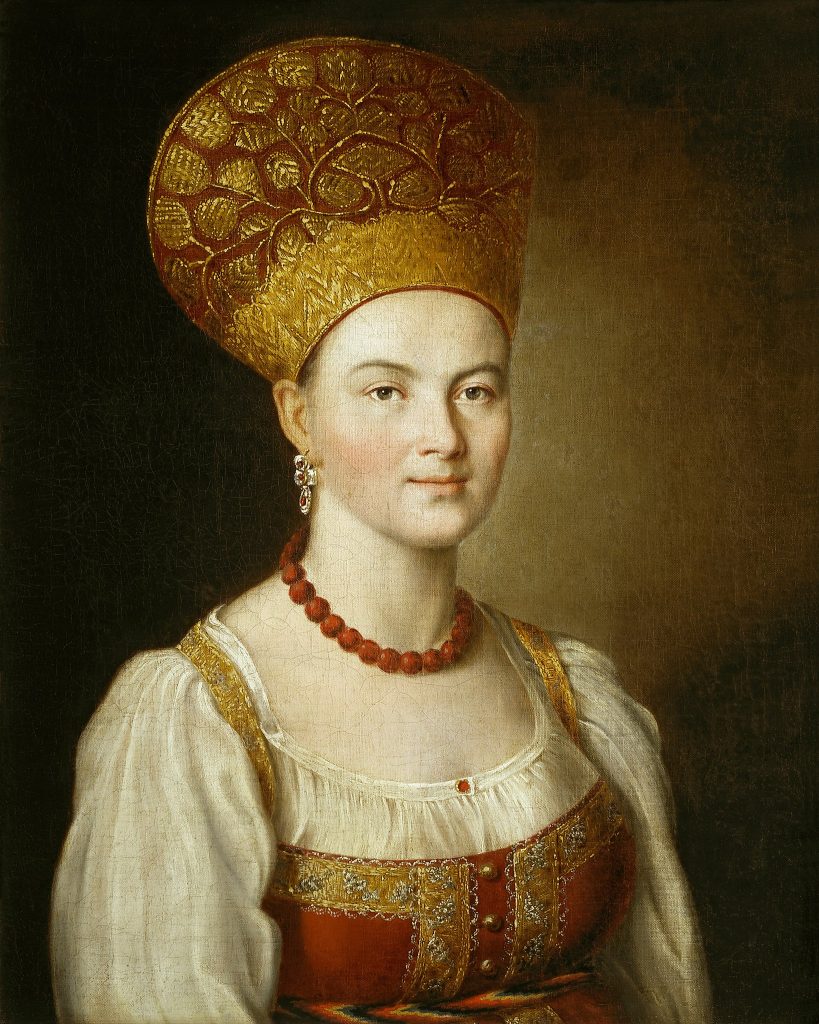
The name comes from the Old Russian “kokosh” – it is associated with the shape of a bird’s scalp. We do not know when exactly the Kokoshnik appeared in the Russian female costume. The use of this word was first recorded in the 17th century.
Already, by the 18th-19th centuries, the item had become one of the most common Russian female headdresses. In Russia, both peasant and city dwellers, who belonged to the merchant and bourgeois class, wore a headdress for festivities, in church, and on major holidays.
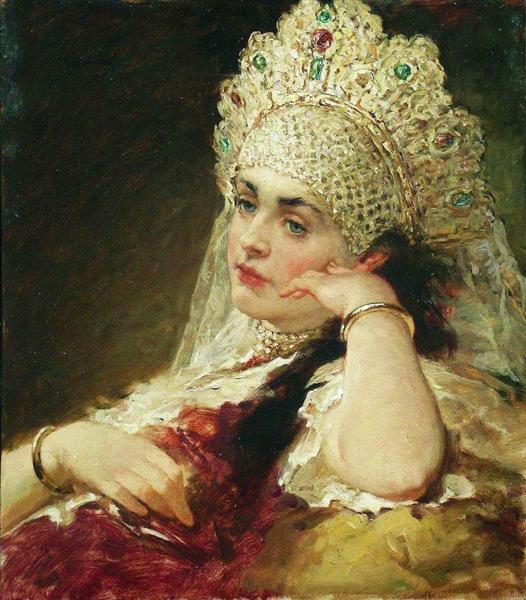
Peter I, who wanted to modernize Russia and model it after the countries in Western Europe, forbade this headdress. But the Kokoshnik survived in the peasant environment as an attribute of festive or wedding clothes.
During Catherine the Great‘s era, interest in Russian history and Russian antiquities were revived. The female costume of Muscovite Russia during the 17th century- which consisted of a court dress reminiscent of a sundress, complemented by a Kokoshnik and a long, gathered shirt- was in vogue.
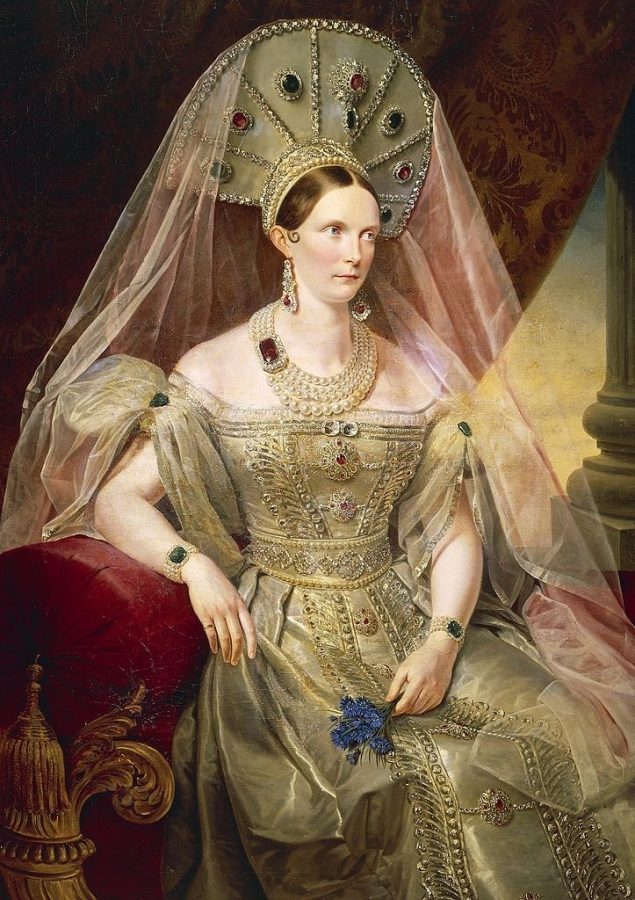
In 1834, Nicholas I issued a decree introducing a new court dress, complemented by a Kokoshnik. It consisted of a narrow, open bodice with long sleeves and a long skirt with a train. The order for wearing these dresses remained until the abdication of Nicholas II in February 1917.
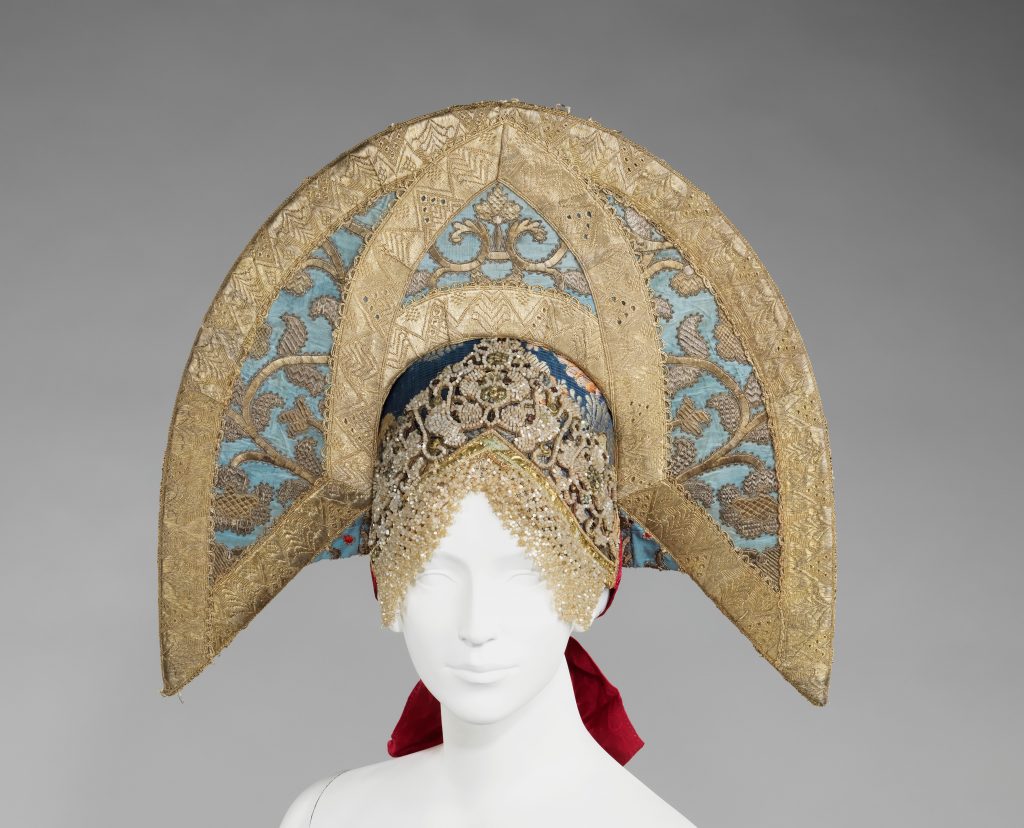
In ancient times, only married women had the right to wear a Kokoshnik. Despite the glorious look, the Kokoshnik’s main feature was that it tightly covered the woman’s hair, braided in two braids and laid with a wreath or bun. The ancient custom of covering the hair of a married woman has been known to all Slavic peoples of Eastern and Western Europe and is associated with pre-Christian religious beliefs.
In this case, craftswomen make a woman. Kokoshniks were usually made by professional craftswomen called “kokoshnitsa”, who had the necessary skills of sewing with pearls, beads, and gold thread, and the ability to handle expensive, beautiful factory fabrics like silk, satin, velvet, and brocade.
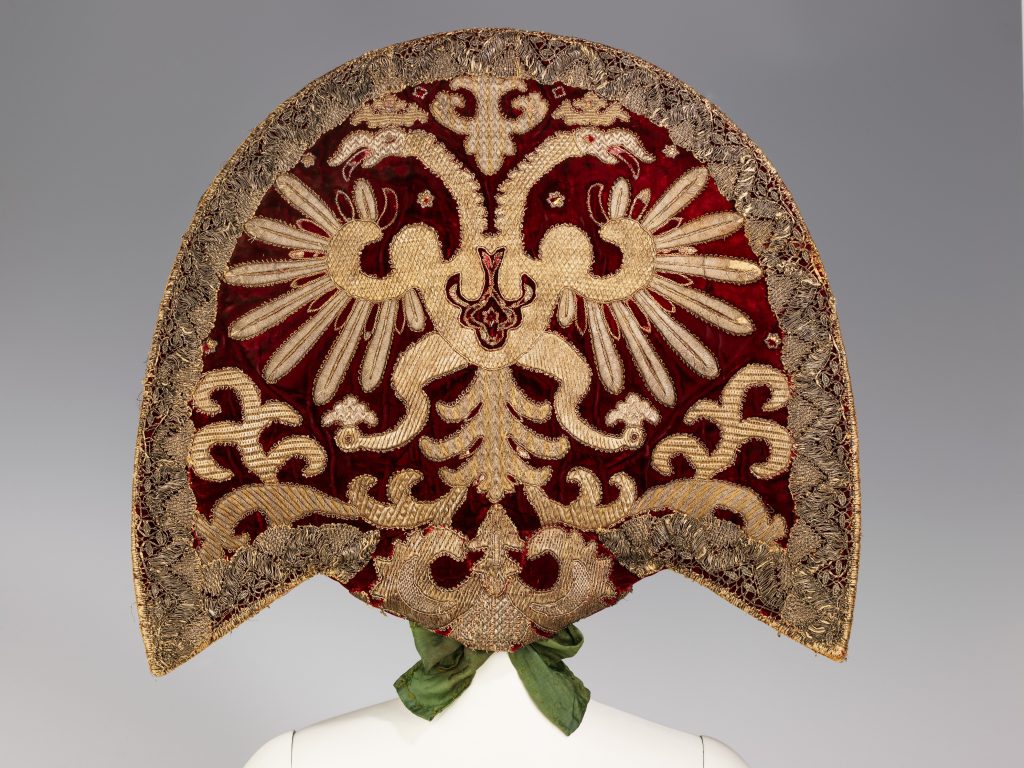
Ornaments that adorned the Kokoshnik had a particular value. In the middle, as a rule, there was a stylized “frog” – a symbol of fertility. On the sides – S-shaped figures of swans – symbols of marital fidelity. A stylized bush was traditionally embroidered on the back of the Russian headdress, which symbolized the tree of life, each branch of which is a new generation. And on this “bush”, there were birds, fruits with seeds, and many other symbolic signs. Thus, the Kokoshnik was also a talisman.
There was a very original variety of Kokoshnik with pearl cones. These unique decorations symbolized fertility. There was even a saying, as follows: How many cones – that many kids.
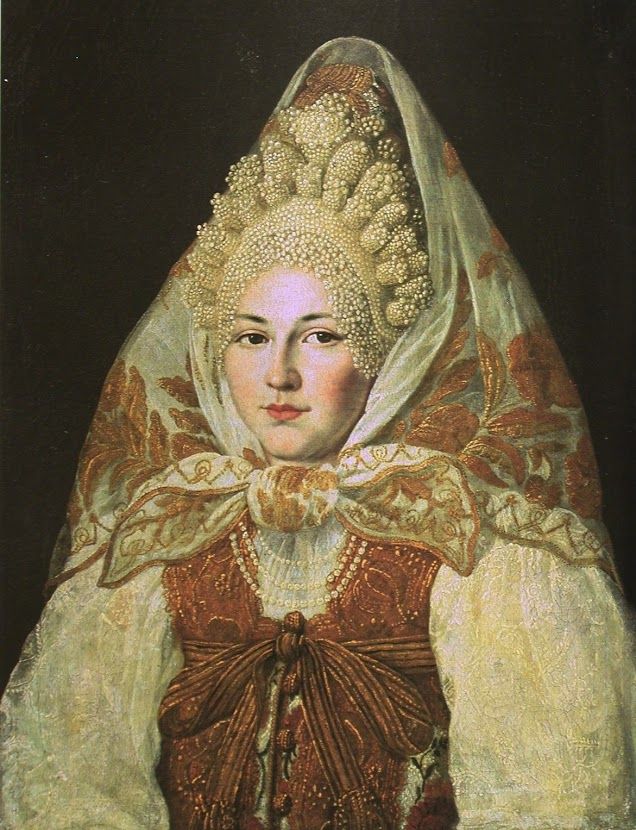
The costs of some Kokoshniks made for the royal family were enormous. Kokoshniks were considered a great family value. People carefully kept them and passed them on as an inheritance. Often, several generations of women used them.
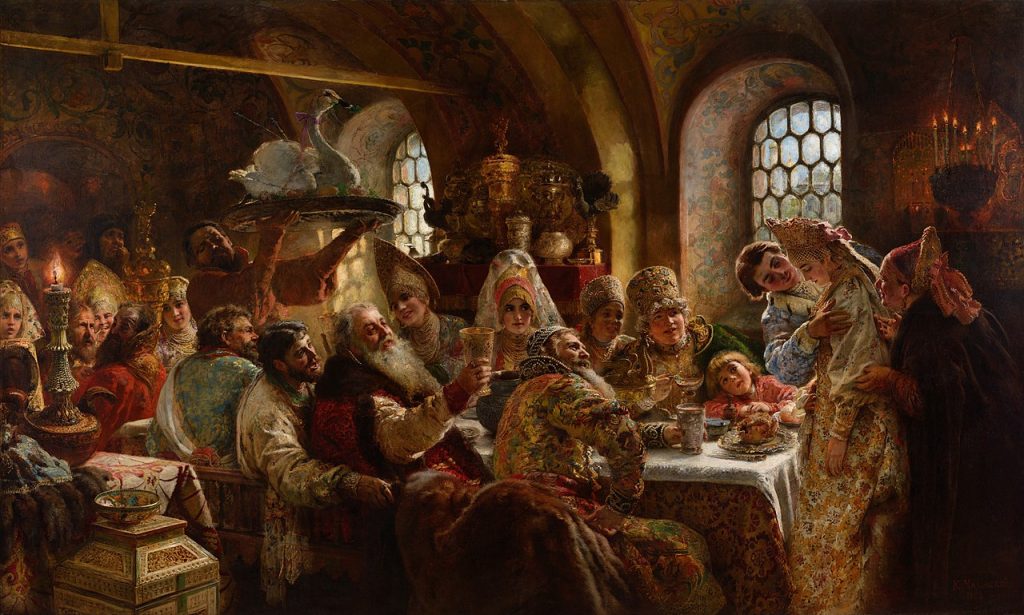
Of course, nobody did spinning or cleaning in Kokoshnik and a fancy dress. This lady is probably waiting for guests to come and think that she considers housekeeping a major event!
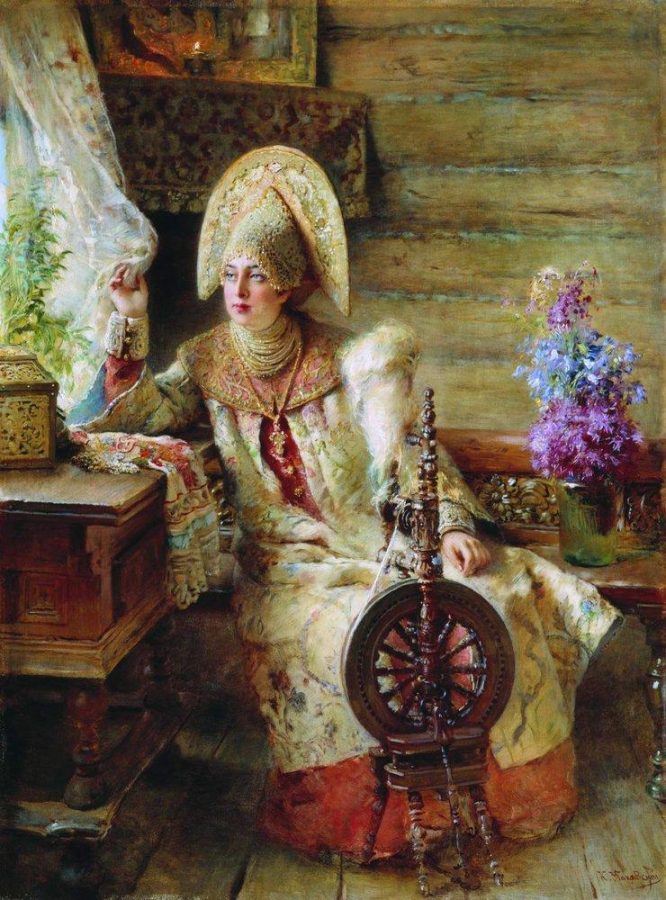
Members of the English royal family still wear Russian headdress-like headbands for weddings and important events. Both Princess Eugenie of York and Meghan Markle married in such diamond tiaras. And Kate Middleton wore a variation of the Kokoshnik at the christening of Prince Louis.
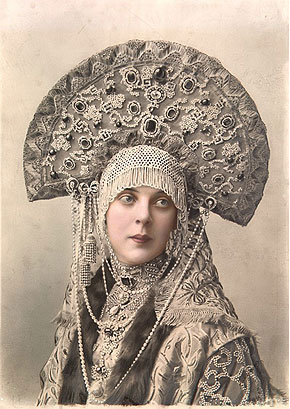
On the runway, Kokoshniks were extensively rethought by Karl Lagerfeld. They appeared in 2009 at the Chanel “Paris-Moscou” show. And Jennifer Lopez posed in a traditional Russian headdress in 2014 for the cover of the Russian Harper’s Bazaar. Today, many fashion brands offer their own versions of the Kokoshnik: classic and reinterpreted – in the form of pretty, minimalistic headbands.
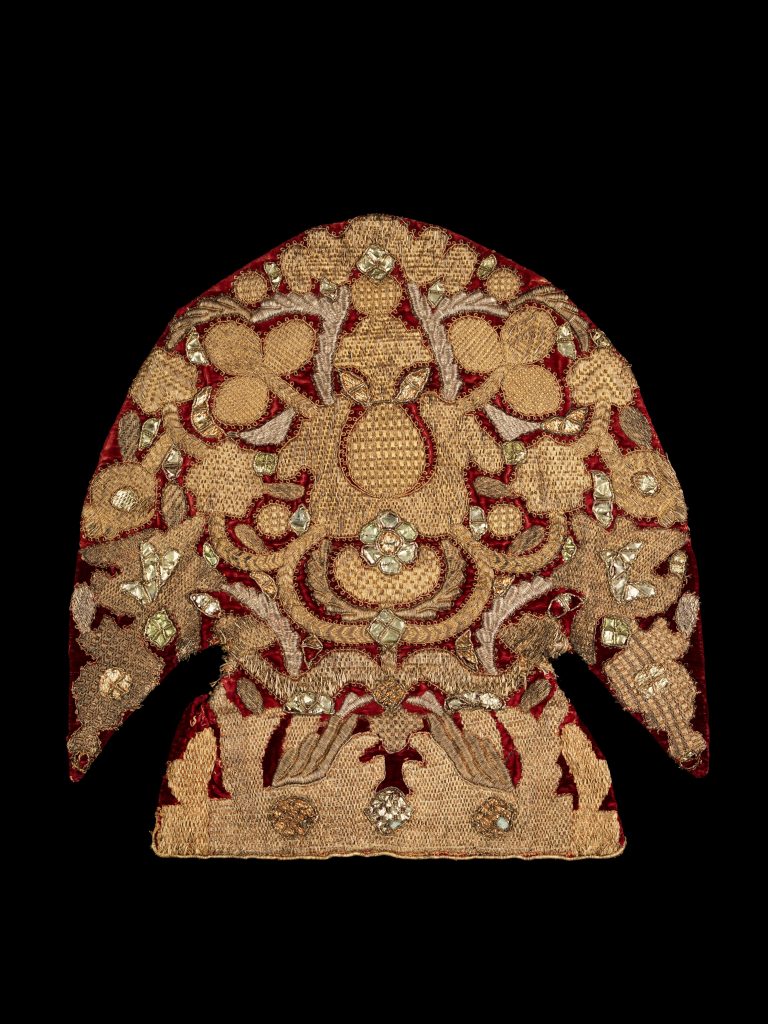
By the way, Queen Amidala’s “refugee outfit crown” from the second episode of Star Wars is also inspired by this traditional Russian headdress.
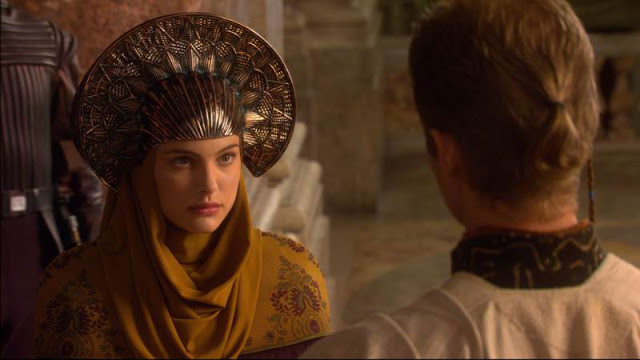
DailyArt Magazine needs your support. Every contribution, however big or small, is very valuable for our future. Thanks to it, we will be able to sustain and grow the Magazine. Thank you for your help!